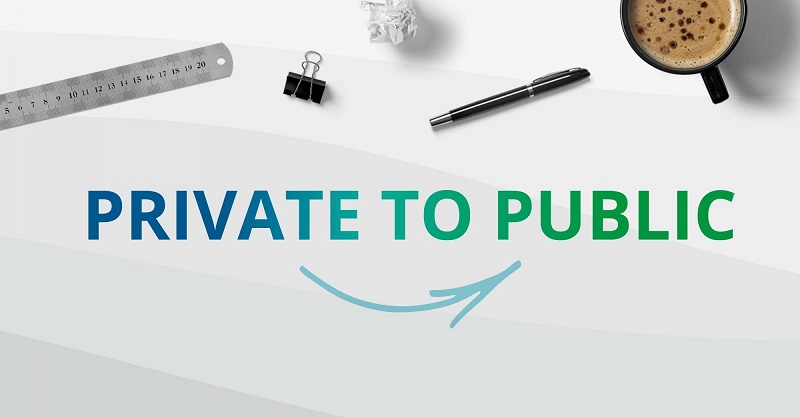Private companies are from Mars and public companies are from Venus.
Okay, we’ve exaggerated, but there’s no doubt that privately held and publicly listed companies run many aspects of their business differently, including how each handles executive remuneration plans.
Our IPO executive remuneration checklist lays out 8 things for you to consider when transitioning your plan from pre-IPO. But, before going through our checklist, we first need to know why this matters.
Why does Executive Remuneration Matter When Prepping for an IPO?
There is a contrast in how pay is structured between private and public markets. Companies need to be prepared for the transition to a world of greater transparency and external scrutiny from a wider set of investors and stakeholders.
A well-thought plan can help your recruit and retain high-caliber employees to grow your business in the listed environment.
Once listed, any changes in remuneration arrangements need shareholder approval. Addressing these issues before going public enables you to do this in private (i.e. save time and effort)
So it’s important to carefully review and plan your executive remuneration program early in the IPO process.
IPO Executive Remuneration Checklist
1. Set up Remuneration Committee
Any company in the pre-IPO period should have a Remuneration Committee in place (AIM companies are not required ), whose responsibility it is to set and review the policy and practices on the remuneration of senior management personnel. This process should begin as early as is feasible, but it usually doesn’t happen quickly and it’s normal for this to continue into the post-IPO period.
The Committee effectively draws up a pre-IPO checklist, with the purpose of this being to create a roadmap that will enable a company to transition its executive remuneration plans over time.
2. Identify Peer Group for Benchmarking
Selecting a public company peer group will allow the Remuneration Committee to effectively benchmark your own executive remuneration approach as a publicly listed business.
Companies in such a group should be of similar size, and this can be done by reference to key indicators such as business models, revenues, assets, market cap, and industrial classification.
These peers should fall into an appropriate range in terms of size, typically 0.5 to 2 times the size of the company, to be a suitable comparator. Generally, the group consists of 12 – 20 companies. Some even have 20 – 25 companies.
Don’t underestimate the time and effort involved in peer-group construction. Poorly constructed peer groups have been linked with remuneration levels that are either too small or too generous.
3. Build Remuneration Framework
A remuneration framework is to formally outline a structure for employee remuneration with the rationale. It needs to be established early on, as it will serve as the foundation for most if not all remuneration-related decision-making.
Among the points that need to be addressed in forming this framework are:
- Objectives including a set of guiding principles reflecting company values and actions.
- Pay mix (base salary, annual incentives, long-term incentives, and additional benefits – with the blend highlighting short-term vs. long-term and also performance vs. retention and/or attraction)
- Where the company wants to position itself relative to its peer group
- The type and amount of equity to be used
- The approach to benefits and prerequisites (what perks are on offer and what boxes must be ticked to become eligible to receive them)
Contact Us Today
Are you considering an IPO? We’ve walked this path with some of the world’s biggest companies.
Contact Us
4. Revisit Executive Pay Levels
Based on a 2019 study, there is a huge gap in the total value of executive pay between a private and public sector. To dig deeper, we can see the driving factor is long term incentive treatment from the following graphic.
The study shows that base salaries and target bonuses for executives at private companies are similar to those at public companies. But, their long term incentive plan (LTIP) practices differ most noticeably. Private companies are significantly less likely to provide a regular LTIP (38% of private company CEOs vs 97% of public company CEOs). Of those that do provide LTIPs, their plan is quite different from a public company’s:
- 80% of LTIPs are performance cash plans
- Less likely to use real stock or options
- less likely to use value-based performance measures
This being the case, executive pay arrangements need to be reviewed in the pre-IPO period. Consider your remuneration framework and think about if they reflect your go-forward philosophy?
Practices will also need to be brought more into line with how public companies tend to operate, but there is also an onus to make sure that what is on offer to new executives in the future will be attractive.
Unreasonable pay will attract unwanted criticism from investors and analysts.
5. Review Share Plans
When transitioning to a public company, a pre-IPO equity plan that often contains provisions that apply only to private companies, will be gradually transitioned to provisions allowing for all types of equity grants. They can be restricted shares, single incentives, share options, growth plans etc.
Usually, a special equity award (or called founders grant) is given to executives at or near IPO if significant equity has not been granted in the years prior to the IPO. This provides an incentive to reward them to stay during the critical IPO period.
If awards are not made immediately, you can implement an architecture that enables the awards in future years. Again, early preparation can avoid having to seek separate shareholder approval post-IPO
6. Ensure Competitiveness of Executive Remuneration Levels and Mix
Maintaining a competitive remuneration program is critical to attracting and retaining top talent.
Apart from that, you need to be aware that institutional shareholder advisory groups serve as critics in determining whether you have done a good job in setting remuneration packages. They continue to influence these trends by defining “best practices.”
Remuneration strategies need to establish a link between effort and reward and, again, private company executive remuneration practices will not necessarily translate well into a post-IPO landscape.
Its levels should be set for base salary, target bonus, equity or long-term incentive awards, and other benefits. It is important for the committee to compare the total package when measuring against the peer group and align recommended levels with the company’s remuneration framework.
Executive remuneration should be aligned to a company’s purpose and values, and be clearly linked to the successful delivery of the company’s long-term strategy
7. Lock-up Periods
A lock-up agreement prevents insiders of a company from selling their shares for a specified period of time. In the UK, most companies impose a 12-month lock in period for executives.
The general idea behind them is to prevent too much selling of stock in the period right after going public and driving the price down.
What do you need to know when it comes to executive remuneration? Essentially, that they exist and should be part of your strategy, from how you communicate it to your executives to how they will impact the IPO and share price itself.
8. Be Prepared for Increased Shareholder and Media Scrutiny
Shareholders actively monitor pay practices for executives to ensure pay for performance. They also have an advisory vote on executive pay matters, known as ‘Say on Pay’ vote.
As a result, there is more scrutiny of pay practices for executives. A company should be prepared to justify pay strategy and practices.
Overseeing the Transition when Going Public
As private companies move through the pre-IPO process, they should consider an audit of all aspects of their executive pay practices, to identify what needs to change and over what timeframe.
These changes can be implemented over an extended period, even beyond going public, which means that Remuneration Committees should have ample time to identify what needs to be done and oversee the transition from private to public company practices.
While the road to going public may be a long and arduous one, with many twists and turns, when it comes to executive remuneration, it’s vital to follow the steps outlined above – if not, you may find yourself on the surface of Mars wondering why Venus looks so different nowadays.
Please Note: This publication contains general information only and Global Shares is not, through this article, issuing any advice, be it legal, financial, tax-related, business-related, professional or other. The Global Shares Academy is not a substitute for professional advice and should not be used as such. Global Shares does not assume any liability for reliance on the information provided herein.








